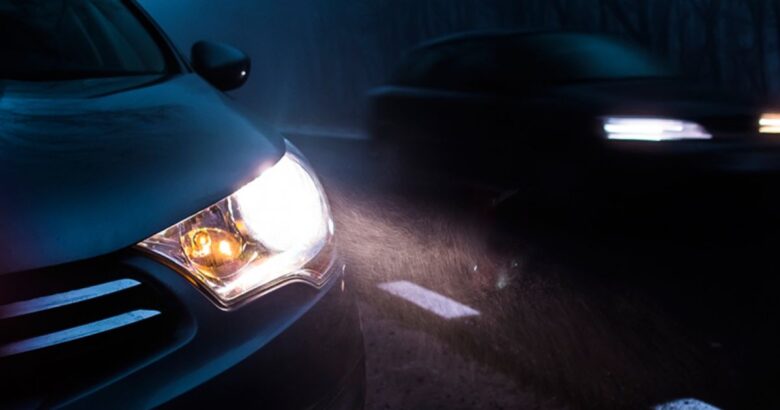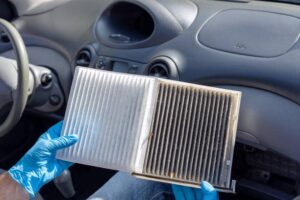When one mentions driving, visibility inevitably comes to one’s mind. For instance, say, you are on a highway, asleep inside your car and when you wake up you are horrified to know that the headlights have gone hoarse or the tail lights have completely extinguished. This is not only inconvenient; it is dangerous. This is particularly true for car light maintenance which is often ignored, however, those bright beams work not only to light the road ahead but also to protect you and keep other road users aware of your presence as well.
Caring for and checking your car lights from time to time can help prevent such instances as a breakdown that is likely to be hazardous to yourself and others. Regardless of whether the purpose of going out is for an outing deep in the night or going out for work, it is advisable to make sure that all vehicle lights including the indicators are functioning properly. That’s right, let’s get into the matter of how to maintain those essential car lights!
The Importance of Regular Light Maintenance
Every driver needs to comprehend the need for constant light maintenance. Lights number one and light number two are both important for every individual who drives a car. These lights, whether you are driving at night or in daylight, allow you to drive the vehicle and not worry whether other vehicles will see this one. If this phase of car maintenance is disregarded, then there can be low vision and thus a higher chance of leaving and hence a crash afterward. To you, a blurred bulb or a dirty lens may seem irrelevant; however, they determine your capacity to maneuver in the dark or during adverse weather conditions.
Besides all that, making sure that the bright lights are in good condition helps in improving the efficiency of your vehicle. This is because if the lights work well, they help in the works of the electrical system hence improving the economy of the car.
How to Check Your Headlights and Taillights
It is also important to check your headlights and taillights if you want to take care of your vehicle. Begin by identifying a flat ground where you can park your car safely. When this is done, start the ignition of the vehicle and switch on the lights. Move around the car and evaluate the working of each light unit. Both front lamps should be bright, up and down one headlight should not be working on the central spot only.
After this step, proceed with checking the taillights in the same way. Make sure you do not see any broken parts or some old details that will make it hard to see the light. Also, pay attention to brake lights press the brake and request someone else to watch from the rear. This way one will be assured that the brakes will always be bright when they are meant to be used.
Common Issues with Car Lights
Car lights can get exposed to different challenges and as such visibility is compromised, safety is put at risk as well. One problem that is so common is bulbs that burn out. Losing light suddenly for instance can take anyone by surprise and on most occasions there are no alternatives but to replace the blown or burnt fuse within. Another common problem is the foggy or the yellowing of the car lens. This dull look does help in the brightness instead, it makes driving at night very risky. It is possible to restore this through cleaning or polishing.
Wiring issues can never be ruled out whenever a problem arises since they present a fair amount of difficulty. Present-day light bulbs can flicker and die out because there are chances of having poor connections. It is a good practice to conduct regular inspections so that issues may not become complicated as time goes by. Fuses may be blown, resulting in loss of the lighting systems that were in the car. If a lot of numerous lights go out at the same time, I suggest it’s time to check the fuse box to help you efficiently troubleshoot the issue.
Troubleshooting Tips for Dim or Flickering Lights
If your headlights or tail lights are malfunctioning as in turned on but dim or flickering then the repairs to be carried out are overwhelming. Begin with the bulb’s connections to the power supply. Improper fastening of connectors affects the effective transfer of the electrical current. Following this step, inspect the bulbs as well. A bulb that requires replacement may no longer be used in offering the required brightness. If the bulbs appear to be too foggy or there are dark marks on them, it could be time for a change.
Corrosion on light fittings is another source of faults. Check for burnt areas, rust, or dark patches around the light socket since most people complain that it is doing nothing; at least doing mild cleaning can go a long way. The electrical system of your vehicle must be taken into account. Either a weak battery or a bad alternator might not be able to give out enough juice to power the lights.
DIY or Professional Help
Concerning the maintenance of a car light, the question of looking for help from a professional or doing it oneself always pops up. For some people, it is fun to get their hands dirty and do most of the work by themselves. The feeling of accomplishing tasks within a short time using one’s skills is fulfilling. Through the bear facts, the professionals have knowledge and vast experience with vehicles. Through familiarity with different vehicle models, they can detect problems that one who is not trained may not notice.
What DIY plans offer you is lower expenditure, but only if you are sure about what you are doing. Bad fits or ignoring some issues can result in causing more trouble in the future. Ask yourself how you fare and feel when it comes to using tools and practices. Finding a balance between how easy it is and how much you know is important in finding what is suitable for both you and your interests.
Choosing the Right Replacement Bulbs
The same case applies when one has to choose second-hand replacement bulbs. It is important to determine the bulb type that your car needs. For details, refer to the owner’s manual. Halogen bulbs are popular and inexpensive relative to other bulbs. They do produce bright light but have a short life compared to all other kinds of bulbs.
When looking for energy-saving alternatives, it is advisable to analyze LED bulbs. Their lifespan is considerably longer and the energy they use is relatively less, which makes it a more environmental option. Always make it a point to check that the new bulb is consistently within the acceptable wattage and fitting specifications for your car model. Of course, brand effects have to be taken into consideration; buying good quality bulbs will save you the expense of frequent replacements.
Conclusion
There are several reasons why car maintenance must be undertaken regularly. Fog lights and especially tail lights are also very important when it comes to night driving or driving in the rain. Preventative care helps avoid last-minute emergencies. It is crucial to understand that light bulbs have their respective lifespans and therefore care should be taken when replacing them. Fitting the right type of bulb should guarantee brighter lights when driving.
Basic cleanliness and alignment of your lights should not be forgotten. Such tasks are often neglected but can have a great impact on the ability of someone to be seen or see other road users. Caring for the functionality of lights while on the road is not only safe for you; it minimizes the risks to other road users as well. You can make a difference when it concerns the lighting aspects of the car so that safer journeys can be achieved for all.
FAQs
1. Headlight cleaning: which method is the most effective way to do the cleaning?
To clean your car’s headlights you could use a mixture of water and baking soda or acquire ready headlamp restoration kits at your local auto parts stores. After cleaning, a microfiber cloth can be used to polish them.
2. When is the right time to perform a light check on my car?
It is recommended that you check all your lights at least every month or before you carry out any of the regular services like an oil change. It should become part of your everyday practice.
3. What are the common problems which are likely to cause dimming of the headlights?
The dimming could be caused by several things: dirt on the lenses, Bulb needs to be replaced, electronic problems, or rusting connections. It is always good to know the source to tackle it better.
4. Can I replace my bulbs?
Yes! Changing light bulbs is usually easy and most car owners can do it themselves without the use of any specialist tools. Simply consult the owner’s manual for information on the locations of the bulb compartments.
5. Where can one draw the boundary between what can be done at home and what should be done at the workshop for example calling the repairman?
If you have attempted to troubleshoot and illuminate the problem only to have flickering lights or bulbous coloration, then it would be prudent to visit a mechanic because it may be more than what remains to be done concerning lighting problems.




